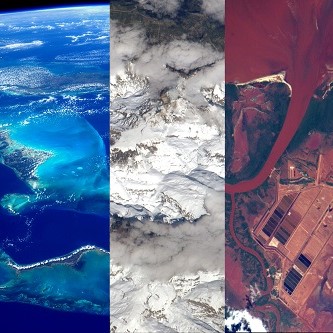The rods from God’s idea is insane and won’t work.
We had this back when the Russians announced they were going to drop conventional ordinance from space, and everyone pointed out that they would be lucky to hit the right continent, let alone Ukraine. In order to make this actually work, you would have to have an active aiming system. Which you know, is a missile.
The launch platform can aim it and use math to account for gravity, the atmosphere and all that jazz to hit the target at least close enough. Just like we already do to safely crash/burn up space debris.
at least close enough
To whose standards exactly? Dick Cheney’s?
Yeah, dick’s standard should be good enough for me.
No, they can’t. The atmosphere is an unknown state, different temperatures, different densities, different wind directions, none of which can be known ahead of time. That’s why weather forecasting is always approximate. You get a percentage chance that it’ll rain. You don’t get a definite time stamp with 100% accuracy.
We cannot predict atmospheric disturbances to the level necessary to make this a practical system. When they burn up space debris they do it “somewhere over the middle bit of the Atlantic” That’s about the level of definition you get. It’s not accurate at all.
no, not really, it still gives you multiple km spread
Someone (veritasium?) Already did an episode on this and concluded even at like 500 feet up from ground, without an active guidance system, it’s up to luck to hit within a reasonable distance, IIRC.
Lol you can’t compare a youtuber 500ft up throwing weights with a full military and scientific effort.
I get your point but the guy he’s talking about is really great. He’s super smart and makes tons of great scientific content.
https://youtu.be/J_n1FZaKzF8?si=402ZBc0vF17yvlKs
Apparently people still think YouTube is only for memes and kids playing Minecraft.
No, but throwing weights from 500 feet up is probably more accurate which was pointed out in the video
this ignoring the tiny little issue of overheating during reentry
Well that’s why one of the proposed materials is tungsten, the problem with that being that tungsten is a bit heavy.
tungsten darts from space sounds relatively sane already. what the boss of russian space agency came up with is putting pallet of FAB series bombs as a payload of an orbital delivery rocket, but instead of putting them at orbit, using it as a giant ballistic missile. take a minute to appreciate how stupid idea is this: at these speeds explosive provides something like 20% of total energy if not less, and you can’t target them really well without good guidance package. if you slow it all down to make aerodynamic guidance easier, you give up the primary advantage which is speed, making it a target for GBAD. all of these bombs would need to survive reentry, and russians don’t have IMX
it’s not rods from god, conventional FOBS, or anything like that. it’s much more stupid: it’s rogozhin trying to make himself relevant again
heavy is one of the advantages though. kinetic mass in a smaller morr aerodynamic package
Well yeah, once it’s up there then no problem. Still have to convert that energy from somewhere though.
It’d be less of a problem if an altitude rail could be set up to deliver the materials to space, but at that point all you’re achieving is making it very obvious what you’re sending into space since all anyone has to do is watch the cargo that’s riding the rail into low gravity orbit
Gram of tungsten has a mass of something like 15 grams
I’m referring to Rogozhin’s idea of putting FAB-500s as a payload, boompaste doesn’t tolerate such conditions
A gram of tungsten weighs 15 grams?
That’s not… how… weight works.
Gram of tungsten has a mass of something like 15 grams.
Yeah, probably not.
19.3 g/ cm3
Removed by mod
Way too many variables to accurately fire an inert projectile through that much atmosphere without being guided at least part of the way.
Yeah you’re right, we aren’t capable of actually doing this.
And how are you going to even deorbit the things?
From a purely physical point of view, is that realistic?
If all of its energy is kinetic, it means that the energy must result from it’s potential energy+any fuel it is propelled with. Ignoring air-friction and terminal velocity for free falling objects, that means that still the energy of a nuclear weapon is required to bring this thing up into space, or stored as fuel for its propulsion.
So unless the projectile is assembled in space, any rocket bringing it into space will contain at least the energy of a nuclear warhead. Gotta be a very nervous launch, knowing that any failure will result in a fire with the energy of a nuke.
A lot of the energy comes from orbital speeds.
The Hypervelocity Rod Bundles project proposed 6,1x0,3 m tungsten rods, weighing about 8200 kg, impacting at about 3000 m/s, meaning about 42 GJ of energy per projectile [wikipedia].
The weakest recorded nuke, the Davy Crocket Tactical Nuclear Weapon, is estimated at about twice that (84 GJ), and the largest, Tsar Bomba, at about 3 000 000x the yield (210 PJ).
That’s their point, how do you get such a heavy thing to orbital speed without spending all that energy? You can’t unless you build it from materials harvested in space.
Oh, I apologise, I suffered some curse of knowledge there, the answer is time.
A blast is a release of energy over a short time, the whole point of building weapons is to store and handle energy in safe amounts over time.
Global electric energy consumption is about 200 PJ a day, approximately the same as the Tsar Bomba, but there’s no risk for a huge explosion neither when you incinerate trash or turn off the AC.
Because time.
Although we could explode a nuke and propel things ballistically, it turns out it’s a lot easier to use rockets. A rocket, although carrying frightening amounts of fuel and exploding spectacularly when it fires wrong, has several safeguards to not expend all that fuel at once. And also gives the opportunity to correct course along the way.
Now imagine that the same amount of energy has been expended many many many times over the course of the space era, and almost any mass in orbit has serious potential for damage.
For example, the MIR was 130 tons, orbiting at about 7,8 km/s, for a kinetic energy of 4 TJ, and another 235 GJ of potential energy. Totalling about a tenth of Little Boy that levelled Hiroshima.
Edit: Specifying and correcting the global energy consumption.
Right, and tungsten rods are dangerous because they don’t slow down and burn up in the atmosphere like most spacecraft do (like you said, spreading out that energy over time and space). As long as you can deorbit them accurately, they are devastating since they convert the entire orbital potential energy into surface kinetic energy all at once. (Oddly, orbital potential energy and surface kinetic energy are the same thing, just from different points of reference.)
Agreed. On all points.
Moreover, the Tungsten rods are quite dense and thus small, and thus very hard to spot on radar or hit with countermeasures.
I’m not sure countermeasures would even work. Even if you could blast it with a half dozen CWIS for the entire duration it’s in the atmosphere, hitting every shot, you might change the impact zone by a few hundred meters. A high-angle trajectory would be completely unaffected.
One of the things that’s stuck with me during my time on Lemmy is someone remarking that the only difference between a battery and a bomb is how controlled the release of energy is. Having seen what happens when you puncture a LiPo battery, I believe it 😰
There is another factor here which is the base energy level of a battery. LiPo batteries still have a relatively high base level, so even when discharged can still burn/explode. There are other battery chemistries that have a lower base and are therefore safer when fully discharged.
Wait this can’t be right or I am missing something. Are you saying that the Tsar Bomba released 10 PetaJoule of energy more than our current world uses in a year?
It’s… definitely not right. Most estimates I found from a quick Google search put global energy consumption at a bit under 600,000 PJ per year, so even if they meant to say daily energy consumption or something they’d still be off by an order of magnitude.
The closest I can get to the number they gave is that global daily electricity consumption is a little over 200 PJ, so right on par with estimates for the Tsar Bomba.
Daily electricity is right, I’ll edit
Tsar Bomba released 210–240 PJ of energy according to Wikipedia. Not sure about global energy consumption.
Still you need that much energy. And it all needs to be on that rocket. So if anything goes wrong with that rocket, it will burn and release the energy of a nuclear explosion. It will be less devastating than a nuke, because it is burning fuel as opposed to a huge shockwave and temperature, but still it would insanely dangerous.
And i’ve yet to come across a space program that didn’t include catastrophic failure rocket launches.
Isn’t this system a rather normal payload? We had really large rockets with the Apollo program.
We’ve seen this already. Starship should be capable of at least 100t to orbit, which is about 40TJ of energy on orbit. The Little Boy was 63TJ, so accounting for losses, Starship flight test 1 was exactly what that would look like.
Do note that much of the energy was lost because most of the fuel didn’t burn, it just evaporated. The Beirut fertilizer explosion was 1/30th the energy, but all released at once.
The mass to orbit isn’t the hard part. A reusable Falcon 9 can put 18,400 kg in low Earth orbit. That should cover two rods, plus hardware to hold and deploy them.
And then you would either need to wait for your satellite to get over the target, or add a lot more weight to maneuver it to the target.
If you add wings for precision you are adding drag and heat, both sapping from your destructive power.
If your weapons satellites all start maneuvering to cross your opponents’ cities then they probably would have a bit of a warning that you are planning something, and likely just shoot them down at a much cheaper cost. Anti satellite missiles have been shown to work, and it would be easy to overheat a satellite with lasers.
You also have to contend with them just nuking you in response. If Moscow were to be destroyed in a single blast they would not wait to determine if it was nukes or something else, they would fire.
You can definitely make some stealthy satellites.
I was thinking for release you could actually fold out wings/parachute to increase drag so it would deorbit faster and with less propellant.
Don’t think you can target a satellite with a laser, it’s too far away and you’d have to find it first.
But overall it doesn’t seem particularly efficient or useful.
So a little bit of looking around, and some “Close enough, fuck it” math suggests that the Saturn V over the duration of it’s launch emitted about the same amount of energy (190 Gigawatts over 2.5 minutes = 2.85x10e+13 joules, close to 7000 tons of TNT at 2.93E+13 joules) as 1/3 the yield of the Fat Man dropped on Nagasaki (FM = 20,000 tons of TNT = 8.36e+13 joules).
Now I’m not math inclined, so you should take all this with more salt than your doctor recommends, but if the rocket’s output is comparable to 1/3 of an actual nuke, then it’s not unreasonable to think that converting all of that back into kinetic energy would get you roughly 1/3 of a nuke’s output, which could be said to be “the force of a nuclear weapon.” It would take a launch of something Saturn V sized or bigger to put one up there, but supposedly Starship would be up to the task if it ever stops exploding itself and/or it’s launch pad.
What I’m saying is, it’s plausible enough for a blurb on some article.
And friction would cost some work both way
Yes but it’s a 30 ft tungsten telephone pole. With that mass on size, there is minimal air resistance and free fall as it falls perpendicular
US air force put an unmanned craft into orbit for 12+ months with a large enough payload to test this.
They did it last year or year before?
TheX-37B? They definitely didn’t test that for this. The capacity weight is 227 kg.
deleted by creator
deleted by creator
There has actually been multiple occasions were Russia was caught trying to break that treaty, kind of interesting to think about. The question is if Russia does actually mobilize an orbital nuclear weapon someday like an advanced Sarmat or some kind of space bomber, will the nations of the world act in unison or watch in silence?
Have fun with that existential dread while I work on my laundry.
They are super far from having that kind of money. Anyways the US would know early enough to stop it.
True I bet the Russian Oligarchs would secretly siphon that project’s funds in moments, just like they did to the Russian Navy.
Nah, the USA would join them and try it.
They probably are waiting to not be alone…
deleted by creator
What about the Jewish Space Lasers that MTG said started the wildfires?
Magic The Gathering has a lot to answer for.
It has a special exemption as long as it’s not used on a Yom Tov
The problem I remember is that it is expensive to get the rod up there in the first place.
Also every other nation would hate us and make jokes about the collective small penis of the US state.
That’s why the eventual strategy would be to build them in space with minerals from the asteroid belt.
That would involve building a factory in space. If we’re capable of doing that, creating a kinetic OWP with which to bombard the earth would be small ambition.
Just slap some rockets to a big enough boulder, Planetary Annihilation (videogame) style.
Also the tungsten oxides produced in high velocity impacts are potentially worse than fallout.
Gotta mine them in space, but there’s still a whole host of other issues with the idea including aiming them, having enough stations to deploy them anywhere on the planet in a reasonable amount of time, and the other non-radioactive problems that result from throwing a fuckton of tungsten at terminal velocity into something.
There was a YouTube video with, I think action lab, where they tested this weapon on a smaller scale with sand castles.
The experiment failed overall because of the difficulty of aiming the payload and anticipating the correalis effect
Veritasium I think.
Yep that’s the channel. Thank you!
Video for those interested.
I remember that this was one of the factors that weirded up the whole cold war. ICBMs are hard to aim, though in the US we were able to find a workable solution. (A Polaris could drop a retarded-descent pizza into my driveway and then conveniently dispose of itself in the nearby unused lot.)
Soviet missiles were not so accurate, so they just build bunches of them hoping to hit their targets through sheer redundancy. (This became dinner talk at Cal-Tech in the eighties since SDI was expected to be able to intercept the entire Soviet nuclear arsenal, including bunches of decoys) So their redundancy was used by General Electric to promote the missile gap, as justification why we needed to buy more GE nukes to close the difference.
This is why, I’m pretty sure, we don’t really need to be too afraid of DPRK going madman with their handful of nukes. So far we’ve seen the Kims lob ICBMs into the pacific, but they haven’t shown they could hit a given continent, let alone someplace important, and the US knows from its own experience that ICBM math is hard.
lol “the United States state.”
Yes. The United States of America is, itself a federated state that also represents the fifty states. It’s why we have a state department and a Secretary of State in the White House.
I never said otherwise. Petition to call it the United States State from now on. Let’s also call the UK as the United State Kingdom State.
Just remember, they answered your joke seriously agreeing with it. It’s always gonna be united states state along with atm machine and pin number for me.
Yo dawg, we put a state in your state so you can govern while you govern.
I’m assuming USKS is willful absurdity. It would be the United Kingdom state, or state of the UK (not to be confused with a UK state of the union speech).
No because each nation within the United Kingdom, in example Ireland, Scottland, England, and Wales is it’s own State and United they form the UK State so it’s the United State Kingdom State.
Ah yes, we would do that, definately haven’t already started… no, of course not.
It’s well within the character of the US federal government and the armed forces to go forward with an OWP platform program right now, even despite the risks and ethics concerns, sadly.
Removed by mod
It is a pretty great book, although it’s a shame that Heinlein spent so much of his time being a douchey libertarian warhawk.
This idea was expanded upon in The Expanse series as well, with the added benefit of using small asteroids and pushing then into highly elliptical orbits designed to hit Earth at random times anywhere from a few weeks to several years later so your Inner System opponents have to spend a huge chunk of their resources watching for them without knowing if/when any other rocks will hit.
It’s funny, because tracking big rocks months/years in advance is what we currently do really well, and iirc we update all trajectories of all known objects orbiting earth at least every 11 days, and the main problem is figuring out which is which when they are maneuverable, not where they are going.
There’s currently about 750 000 things being tracked in earth orbit. The total number of asteroids is about twice that, so without upgrades we can still refresh each object every month, and with active space flight I’d guess that would be done much much more often.
Although, doing the math, enough Epstein drives (guesstimating tens) on a smaller asteroid could yield up to 1 m/s² acceleration, meaning an asteroid could traverse the distance from asteroid belt to earth in about a week.
It’s not nearly as easy as you’d think in the case of rocks being dropped from the moon. The crux of the issue is that:
- We are not well equipped for space situational awareness in cislunar space
- There are many orders of magnitude more volume to observe in cislunar space than in the space below the GEO belt
- The previous two bullets mean it’s difficult to find a non cooperative target once you lose it and the precision of any observations is poor. The sheer volume of space that need to be observed makes this issue nearly impossible to fix.
- Trajectories in cislunar space are highly chaotic due to multi-body effects. Combine this with poor estimates of position and velocity, and our predictions of the future diverge rapidly from truth when propagating cislunar orbits.
The Tl;dr is that we can’t effectively track non-cooperative objects in cislunar space over any extended period of time.
This is fascinating, could you perhaps link to some reading on the topic?
Sure! AFRL released a document called a primer on cislunar space targeted towards military personnel that does a great job of explaining it in easily understood terms.
Thank you!
Well, if the rocks are sufficiently small and plenty as well as stealth coated (or at least painted black) they are still a nuisance with deadly potential.
In The Expanse the group responsible for the attack stole the most advanced stealth coating in the Expanse universe to paint the asteroids, leaving Earth unable to detect them with anything but their most powerful sensors.
The expeditionary force series expanded that further with guided asteroids accelerated to near light speed orbiting the galaxy.
What time scale is that story on, that a 300,000 year delay on a weapon is feasible?
Normal human time scale. The projectiles have jump drives. When a object jumps it retains its momentum.
So basically they have these projectiles traveling at 30% of light, with the ability to jump into position to strike a target.
Well that answers my second question, which was how something could orbit at 200 times orbital speed.
The answer is there was never any orbit.
They have jump drives homie, when they start to escape they can jump back
Also speed wouldn’t be an issue if the orbit is extremely extremely elliptical.
Nah, this is 200 times escape velocity, there is no possible orbit at that speed, just careening out to another galaxy, floating endless in the galactic cluster, or leaving the cluster altogether.
Any orbit would take millions of years anyway, so they can just cruse around, ingoring orbit altogether.
KSR did something similar in 2312 where multiple small asteroids were programmed to impact at the same point same time which had the effect of a larger impact thanks to kinetics but undetectable due to being small objects of various origins that would have looked random even if detected
Oh, thanks for reminding me about 2312. I read that one a few years ago when I first discovered that he had written more than just the Mars Trilogy, but I should probably revisit since I sandwiched it between two of the Climate in the Capitol books and clearly I don’t remember it that well.
TANSTAAFL
If anyone wants some good sci-fi, I recommend The Expanse, both the books and the show. They make great use of kinetic impactors, especially Nemesis Games.
Doors and corners, kid.
Other recommended book series for scifi physics:
- Expeditionary Force
- Bobiverse
deleted by creator
Far far better than The Expanse.
deleted by creator
Fuck there are 8 books in Revelation Space?
I read the first three and thought that was it, so I walked away happy. 😄 Lucky me I guess.
deleted by creator
Except you can’t just drop it. You need to push it out of orbit, and then push yourself back in
You could spin and release it, effectively tossing it out of orbit like a catapult.
Then you end up with the same problem
Fun fact, everything with a high velocity (and a certain mass) has a lot of kinetic energy.
(Now think of space ships going light speed. You don’t need photon torpedoes)
Inyalowda love rocks, so let’s give dem sum, sasa ke
True, but to hit things within the atmosphere it needs high mass and low drag. The ISS re-entering would have high mass but high drag, and most of it would fall apart when entering and be slowed down by drag so the energy gets spread through a long streak on the atmosphere instead of on the target
i’m not sure that drag even matters that hard, you need big sectoral density and a way to prevent tumbling
https://en.wikipedia.org/wiki/Impact_depth
Meteorite: As may be concluded from the air pressure, the atmosphere’s material is equivalent to about 10 m of water. Since ice has about the same density as water, an ice cube from space travelling at 15 km/s or so must have a length of 10 m to reach the surface of the earth at high speed. A smaller ice cube will be slowed to terminal velocity. A larger ice cube may also be slowed, however, as long as it comes in at a very low angle and thus has to pierce through a lot of atmosphere. An iron meteorite with a length of 1.3 m would punch through the atmosphere; a smaller one would be slowed by the air and fall at terminal velocity to the ground.
talking about tungsten we’re looking at minimum 50cm long darts, however this ignores atmospheric erosion
If it was going fast enough wouldn’t it just blow through that before it had a chance to fall apart too much?
It depends on the angle really. I would expect it to be dropped from low earth orbit so, unless it’s given some strong retrograde push (also removing most of its energy from orbital velocity), the angle it’d be coming in at would be pretty shallow, so it’d have to go through a lot of atmosphere, so drag is very important.
We should just build space colonies and just drop those when needed
Yeah. Let’s start with Australia.
Science fiction always challenges my suspension of disbelief is when people land on planets to skirmish with conventional weapons instead of, say, throw a big heavy aerodynamic solid rock from space.
In the Expanse series Earth and Mars are at war. They can easily throw rocks and totally destroy the other side. Not just beat them in a war, like totally wipe them out. But Mars knows if they start throwing rocks all bets are off and Earth will wipe them out. Just as Earth knows the same, if they wipe out Mars, Mars will make sure the Earth is destroyed.
It’s an analogy of the current situation we have with nuclear weapons. During the Cold War Russia made sure they could wipe out the US if the US ever tried a first strike and the US made sure they could wipe out Russia if they ever tried something. The Mutually Assured Destruction (MAD) prevented anyone from taking the first step. These days the playing field is a bit more complex, but the same principles hold for now.
Of course in the Expanse there is a third party with nothing to lose that at one point employs such a weapon of mass destruction. But let’s just hope that part isn’t a mirror for reality.
I see you’ve skipped the most advanced detection and targeting systems connected to a network of orbital railguns, and the fact all of that is constantly pointed at Mars in case they launch stealth nukes. Inarocks are not a valid war strategy, and only extreme levels of preparation and corruption allowed a few chunks to hit Earth.
You can make good reasons or at least plausible ones. 40k has planetary shields. There could be a civil war so neither side might want to destroy the surfaces of each planet and civilians. Battletech has spaceship tech being rare and irreplacable, and there are treaties limiting orbital and nuclear bombardment.
Sometimes the most realistic route just isnt fun though so i can usually look past the contrivances.
Good sci-fi usually treats this on par with using nuclear weapons (which it kinda is?). In Babylon 5, mass drivers are banned by intergalactic treaty, and when one race uses them anyway it literally bombs their victims back into the stone age, and it’s treated as a horrifying event --one of the character’s defining moments in the show is just him looking on silently in horror.
Kinetic drives are mass drivers. Unless you use some kind of teleportation or space warping for travel, every ship is a weapon of mass destruction. Every old boat is a surprise WMD, every craft a viable nuke with zero preparation.
So no one considers moon a weapon of m.ass destruction? All it needs is a fairly good booster on the far side …
Neil Tyson said this is entirely impractical.
Neil Tyson needs to shut the fuck up and stop cockblocking me from having based weapons
I mean you have to put a nuclear amount of energy into the rods with chemical energy. Why not skip a step and just drop a big conventional explosive?
The idea is that it’s too fast to ever intercept, is extremely penetrating, and you don’t have to send a bomb to orbit in violation of treaty.
But all the really cool versions use rail guns and asteroid mining.
A guided road is against treaty as well, say it’s a grey area but it really isn’t.
A rod from space impacting with the presumed force equal to a nuclear bomb is in fact a weapon of mass destruction and the language of the treaty is nuclear or other weapons of mass destruction.
It’s worded that way specifically so captured space bound objects can’t be redirected and used as weapons like Heinlein described in the moon is a harsh mistress.
Yes, a reasonable person would interpret it that way, but
“Why would anyone use a gun when you can just use a hand-held explosive?”
Pop scientists routinely mis-represent facts to make warfare seem unappealing and lame, this is due their ‘sense of morality’ (read: crying baby noises).
For example, Carl Sagan warned that operation desert storm would cause a (non)nuclear winter and mass famine in Asia.
Tbh, that’s fair enough.
Once we have mastered space travel, the most dangerous weapon that will be available to almost anyone will be firing an asteroid at a planet.
deleted by creator
Gotem!
For masters of space travel and giant bugs.
For another take on Kinetic impactors try The moon is a Harsh Mistress or as they call them. Tossing rocks down the gravity well.
I remember how in the book people show up to the announced site to watch it like tourists, and of course they get atomized. Same idea appears in Independence Day. I always thought “that would never happen, people aren’t that stupid”, but the pandemic changed my mind on that front.
People were picnicking at the first battle of the american civil war, pretty sure a couple died.
Never underestimate human stupidity.
I mean in Indepedence day they wanted to “welcome” the aliens. What you’re talking about is akin to driving towards where a nuke is about to drop i.e. only for the suicidal
Yeah but…. with that gigantic ship hovering over your city and a known countdown going…. would you?
That’s gonna be a big no can do over here.
Heinlein comes off a bit fascist these days but that’s me.
His books are often (mostly?) social and governmental thought experiments. You’ll find a vast range of ideas if you read all his stuff.
And that range leans fascist.
Would you call “Stranger in a Strange Land” fascist? Because that would seem absurd. (We might make fun of Jubal being a Heinlein stand-in character, and that would be fair.)
Care to elaborate that unfounded opinion?
deleted by creator
deleted by creator
I’ve read Starship Troopers. Yeah the world in it was pretty fascistic. Then again I’ve read quite a few other things from him that give off a very different impressions, like the mentioned Harsh Mistress and Stranger in a Strange Land.
deleted by creator
deleted by creator
Well scifi and yeah the book wasn’t just about the system of governance lol
Actually, I’ve read almost, if not all of his novels. I enjoyed them thoroughly as a young man. That doesn’t change his philosophy as messaged in his work.
deleted by creator
Or try the Expanse!

























